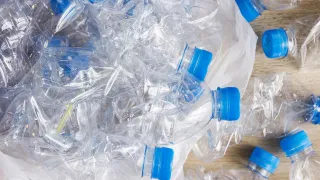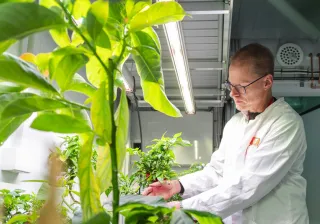The recycling of plastic packages, the replacement of fossil-based plastic with bio-based materials and recycled plastic, and the re-use of plastic packages are topics of intense debate both globally and within Finland.
The Material value chains (ARVI) research programme, which is related to the topic, has concluded its study on the subject with an estimate that about 140,000 tons of plastic packaging waste is generated by businesses and households and that the amount is estimated to grow by an average of 0.7 % a year. In addition, Helsinki Region Environmental Services (HSY) has estimated that plastics comprise up to 15 percent of mixed waste. Most plastic packaging waste today is incinerated and utilised as heat energy. Only about 20 percent is recycled. The proportion of recycled and biobased plastic in plastic packaging remains very small - about two percent.
The European Commission has launched a European plastic strategy, which is aimed at reducing environmental problems caused by plastics. The goal is that by 2030 all plastic packaging on the EU market will be either re-usable or recyclable, and that more than half of the plastic waste generated in Europe will be recycled. For its own part, Finland has taken the challenges of plastic packaging waste seriously and has put out a Plastics Roadmap to show the first steps toward a new kind of sustainable plastic circular economy.
To make the goals of recycling and recyclability of plastic packages possible, we need reliable research-based examination of how the goals can best be achieved. Examining and comparing these methods, meanwhile, can only be achieved through up-to-date and reliable information. VTT, for its part, is also supporting a circular economy for plastics by offering research-based solutions for the entire value chain.
Where can we find up-to-date and reliable information?
However, finding up-to-date and reliable information is not an easy, fast, or simple task. Information is available from numerous sources from different years, and not all the required data is directly available. Utilising the information is made more difficult by the difficulties of interpreting the EU's single-use plastics directive, or how plastics and single-use are to be defined. Before we have a precise definition for plastic packages it is difficult to say exactly how many single-use plastic packages, as defined by the directive, there are in Finland, and how they are handled. The search for information on different types of plastic is even more challenging, not to mention the fact that several different types of plastic are sometimes used in individual packages.
Information on the European-wide situation is available on the Plastics Europe website, and for Finland, the composition of plastic packaging waste with respect to different types of plastic is probably very similar. Information on the costs of processing plastic packaging waste is scattered among companies operating in the business ecosystem. Numerical data connected with energy consumption and emissions can be found primarily in random environmental permit applications and in public sources of information from the companies. In addition, price information on virgin plastic and recycled plastic is available on the pages of Plasteurope, which monitors prices.
With the help of this information from different sources, VTT has produced a calculation and optimisation model which enables the examination of alternate scenarios for increasing the recycling of plastic packaging waste. In the model the impacts of the scenarios can be evaluated from the point of view of different actors in the business ecosystem, and the plastic flows. In other words, the model finds the key factors that would make the recycling of plastic packaging waste more economically viable. This kind of upper-level model can also be used for examining other circular economy business ecosystems. The topic of the next part of the blog series is a presentation of the model itself and the main observations made with its help.
Also needed, in addition to this kind of numerical examination, is information from the different actors in the plastic packaging ecosystem, i.e., companies, as well as their views on the future of their field, their ways of promoting the recycling of plastic packages, and the challenges facing recycling. The main results of a master's thesis based on interviews with companies in the plastic packaging ecosystem can be read in the third and last part of the blog series.
Read the next part of the series: Recycling plastic packaging by means of calculation and optimisation
Jump on to the third and final part of the blog series: A circular economy requires multisectoral solutions from the plastic packaging ecosystem





